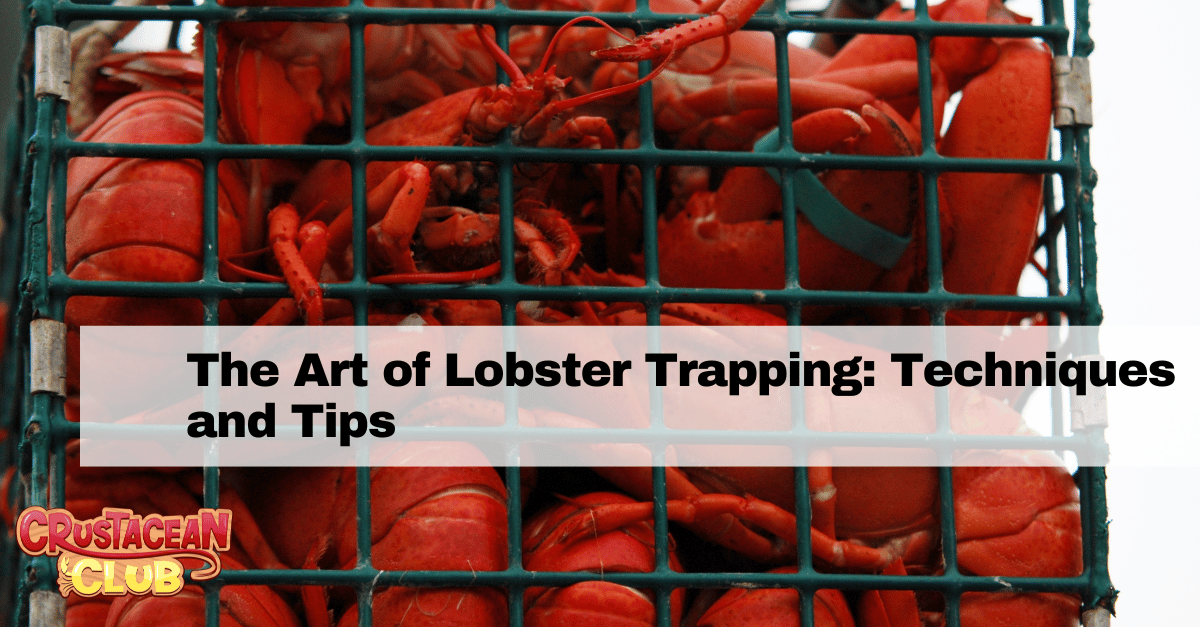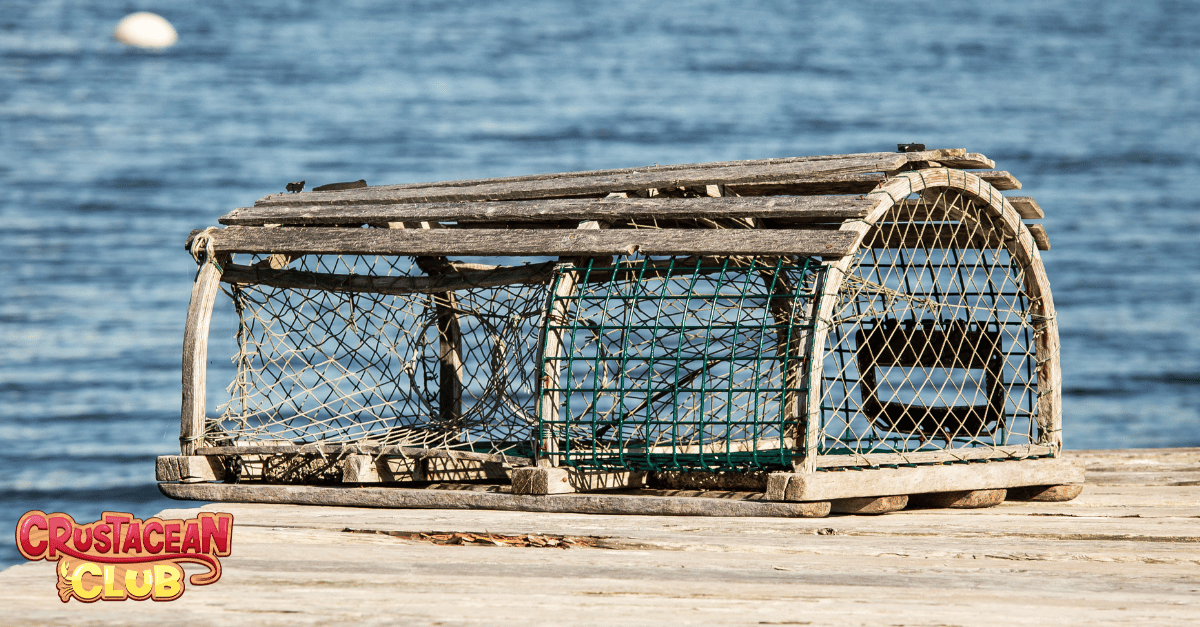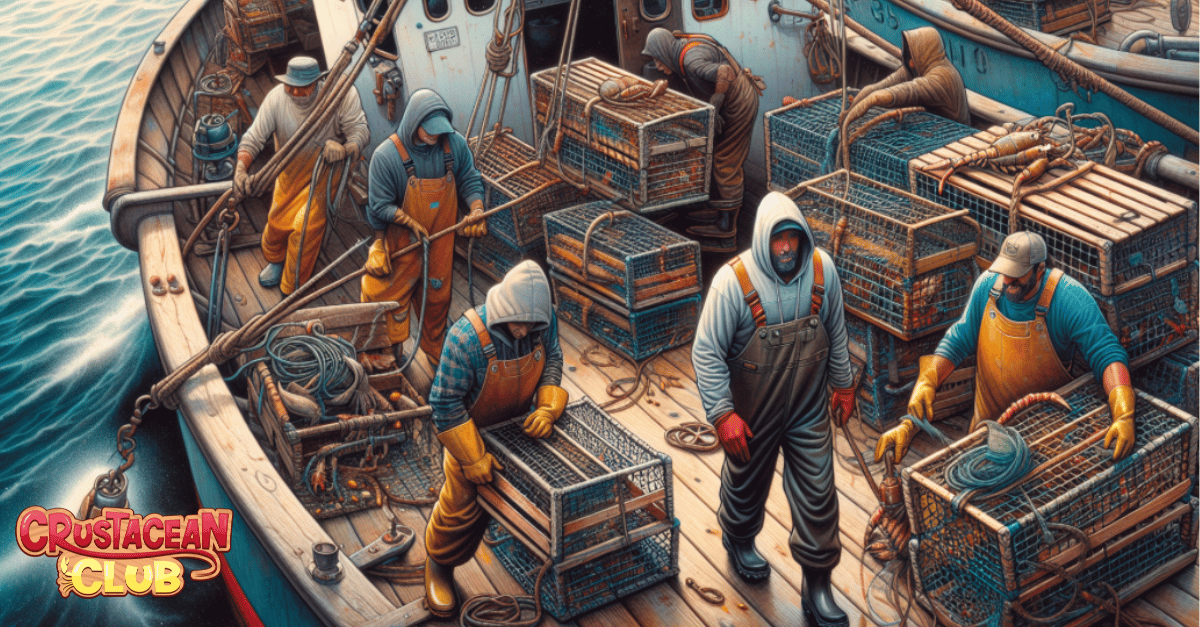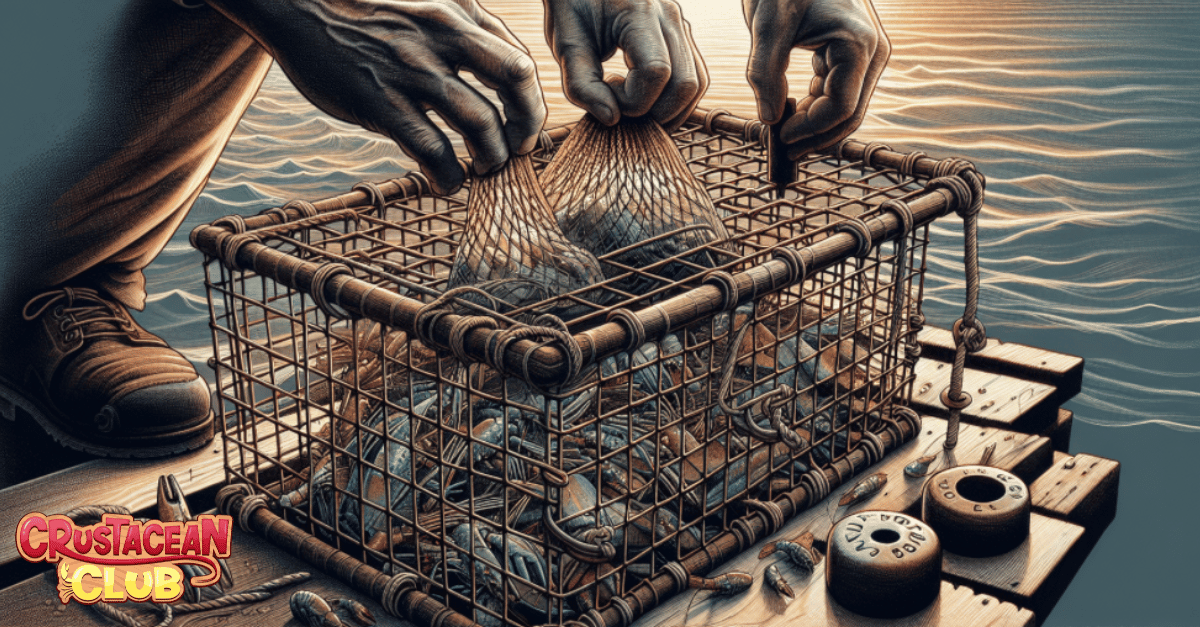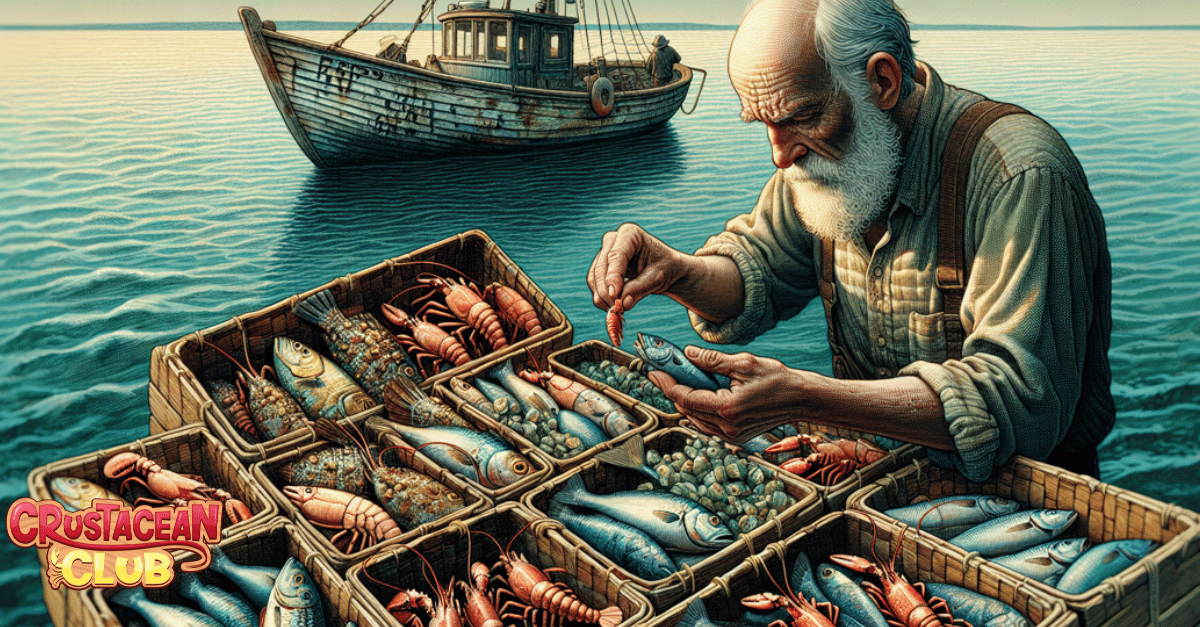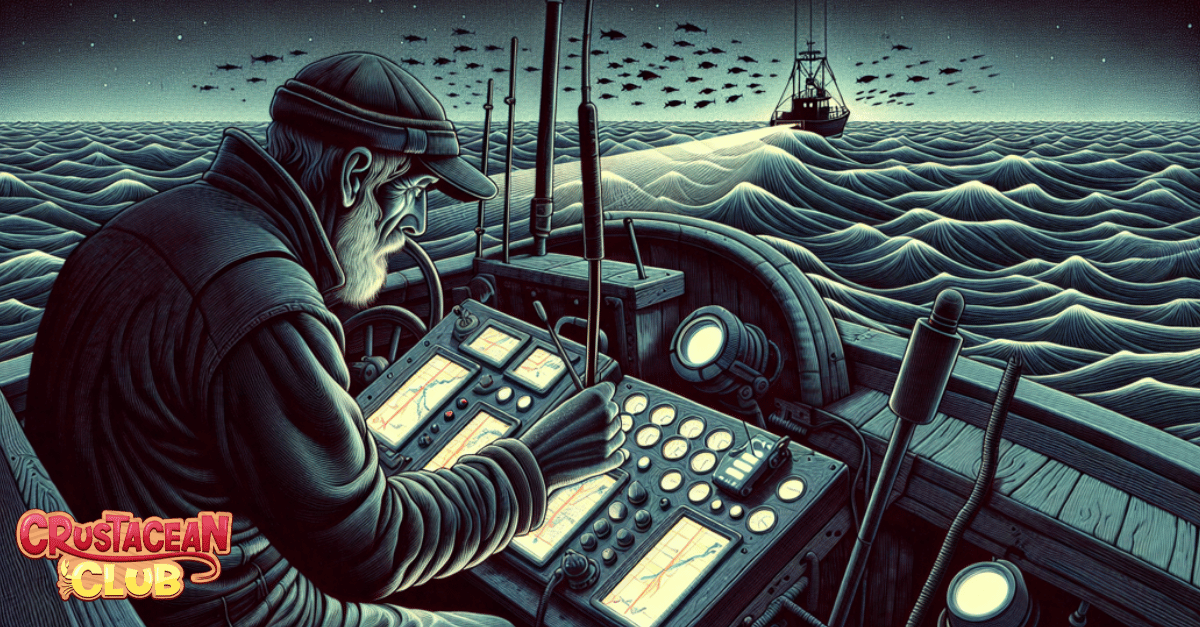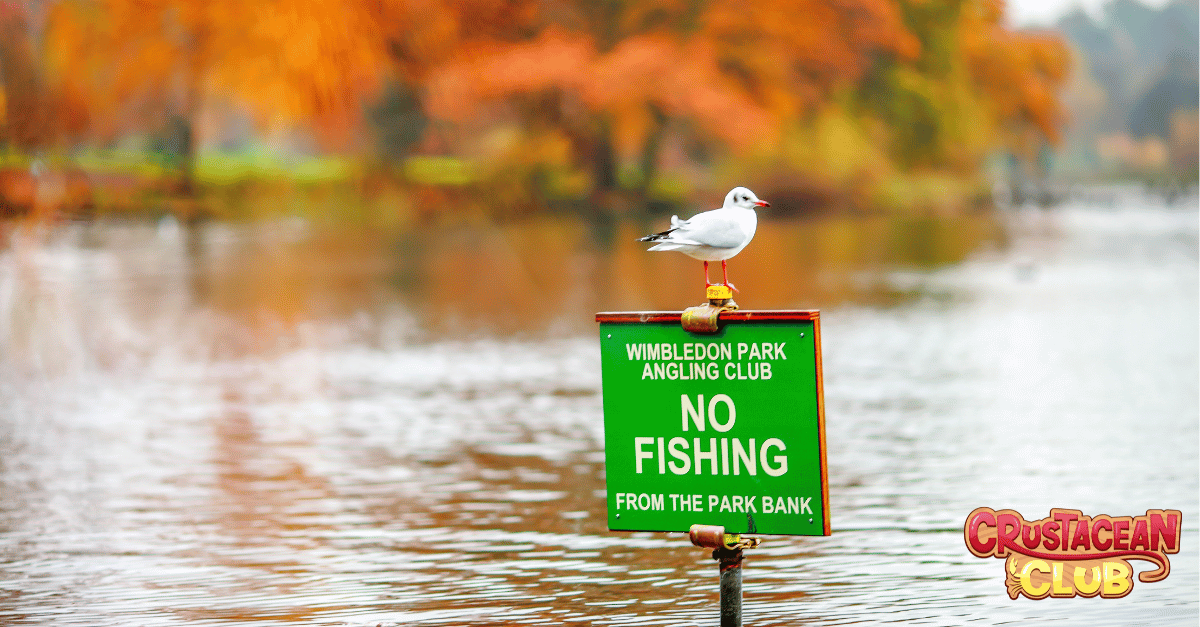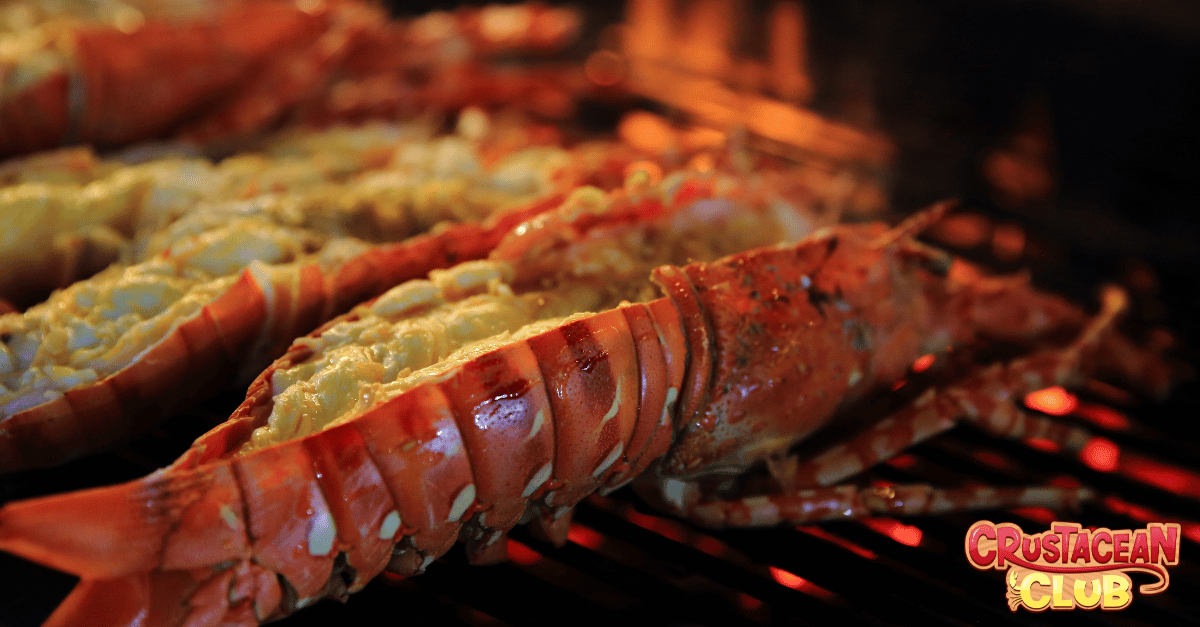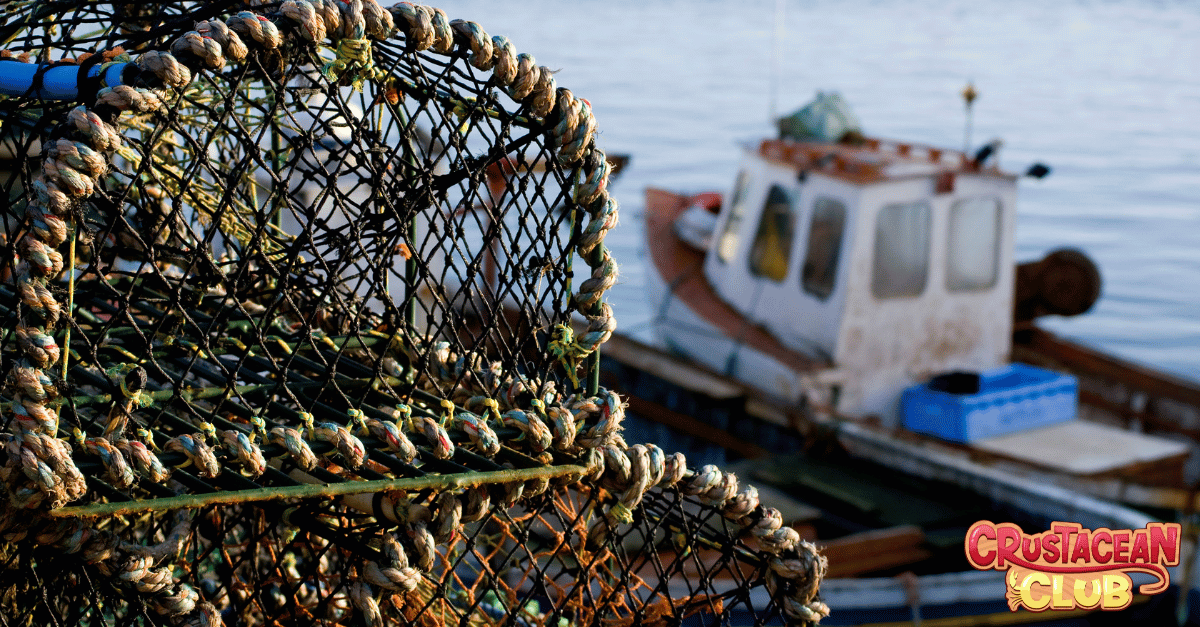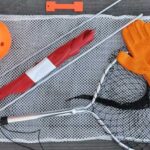The Art of Lobster Trapping: Techniques and Tips
Curious about how to embark on your own lobstering adventure? This guide covers all the essentials. From setting up your lobster traps to choosing the right bait and pinpointing top locations, you’ll find everything you need to start catching lobsters!
For more information on all things crustacean, be sure to check out the Crustacean Club site!
Key Takeaways
- Successful lobster trapping requires obtaining the correct permits, understanding the design and placement of lobster traps, and following safety precautions.
- Choosing the right bait and identifying the best locations to set traps are crucial factors for attracting lobsters and maximizing the catch.
- Adherence to legal regulations and regular maintenance of traps are essential for sustainable lobster fishing and to ensure the efficient operation of the lobster traps.
We love hearing from our readers and subscribers, so please feel free to reach out and contact us today!
How to: The Ultimate Guide to Catching Lobsters
As you step into the world of the lobster fisherman, you’ll soon realize the lobster trap – or ‘pot’ as it’s fondly known – becomes your trusted companion in the hunt for the elusive American lobster. This journey transcends age and experience, welcoming wide-eyed children with recreational licenses who learn the ropes under the watchful eyes of their elders, to the grizzled lobstermen who navigate their lobster boats with the ease of countless seasons at sea, all relying on their lobster pots.
Newcomers need to familiarize themselves with the varying permits that regulate the lobster fishery. These permits, ranging from recreational to student licenses, specify the number of traps you can set on the ocean floor. And let’s not forget the importance of safety precautions; donning layers, oil pants, and a steadfast preparedness for the capricious moods of the weather are non-negotiable.
Introduction
Embark on a voyage of discovery where the ocean floor becomes your treasure map, and the lobster pot your key to unlocking the secrets of the deep. This guide serves as your compass, steering you through the essentials of setting your traps, enticing all the lobsters with the right bait, and pinpointing the ocean’s sweet spots where you can catch lobsters in abundance.
As we delve deeper, you’ll learn how to mark and retrieve your traps with finesse, understand the intricate design of your tools, and navigate the legal tapestry of the lobster fishery. From the thrill of the catch to the joy of a freshly cooked lobster, this guide will shepherd you through every step, ensuring you wield your traps with the wisdom of the ocean’s guardians.
Getting Started with Lobster Fishing
To step into the boots of a lobster fisherman is to join a lineage that spans generations. The lobster trap, or ‘pot,’ awaits your command, a device steeped in tradition and efficiency. Before boarding your lobster boat – no matter if it’s a modest skiff or a large vessel with an experienced crew – you must secure the necessary permits. This step ensures that your sea expedition is both legal and successful.
The sternman, your indispensable ally, will tend to the baiting, the picking, and the banding, each action a meticulous step towards securing your bounty of lobsters and avoiding any unwanted catch like sea urchins. And as the sea’s moods shift like the tides, the importance of safety – cloaked in layers and oil pants – cannot be overstated, for it is the unseen shield that guards against the ocean’s unpredictability.
Setting Up Your Lobster Trap
When positioning your lobster trap, accuracy is paramount. The ingenious design of the trap includes metal rings that eventually succumb to saltwater, guaranteeing that no lobster remains trapped indefinitely. The bait bag, your siren’s call to the lobsters, must be positioned cunningly, luring the crustaceans into the trap’s ‘kitchen’ without offering them a taste from the outside.
Within this underwater lair, the bait hangs suspended, an irresistible enticement for lobsters seeking a feast. And to ensure your trap rests securely on the ocean floor, a weighty brick is often its steadfast companion, anchoring your hopes and dreams alongside it.
Choosing the Right Bait for Lobster Traps
The bait you choose is the linchpin of your lobster trap’s success. Oily fish such as mackerel and sea herring exude an aroma that’s irresistible to lobsters, their scent traveling through the currents like a dinner invitation. Pogies, too, join the ranks of preferred bait, their presence in your bait bag a strategic choice for a fruitful harvest.
Despite traditional tales praising the effectiveness of foul-smelling bait, fresher options prove superior. Fresh fish carcasses from your own haul serve as an exemplary and resourceful choice. But remember, it is the salted herring that often fills the bait bag, a tried-and-true method that has enticed lobsters for generations.
Locating the Best Spots to Set Lobster Traps
Experienced lobstermen understand the potential wealth hiding beneath the waves, where underwater terrains of boulders and crags provide ideal shelters for lobsters. Penobscot Bay, with its reputation for a rich lobster bottom, beckons as an ideal locale for setting traps. Your traps’ placement is strategic, nestled as close to these natural structures as possible, for it is here that lobsters thrive, and your traps promise the greatest rewards.
Depth and water temperature are key considerations, the experienced eye discerning the subtle cues that hint at a bountiful trap.
Marking and Hauling Your Lobster Traps
Due to the ocean’s vastness, your traps – mere dots in its immensity – need a distinctive mark to identify them as yours. Buoys, painted in the unique colors registered to you, bob on the surface, their hues a reflection of your identity as a lobsterman. Each buoy, attached to a lobster trap by a steadfast rope, rises and falls with the tide, a beacon leading back to your submerged treasure.
When the time comes to haul, a gaffe becomes an extension of your arm, the special hook deftly snagging your buoy and beginning the retrieval dance. And then, with the help of a hydraulic trap hauler, the trap surfaces, bringing with it the promise of a harvest, the fruits of your labor cradled within its confines, all thanks to your well-planned trap line where the trap sits.
Understanding Lobster Trap Design
The practical design of the lobster trap is truly impressive, with each compartment named for its resemblance to familiar domestic spaces.
- Enter the ‘kitchen,’ the inaugural chamber where lobsters are first enticed by the bait within a funnel shaped netting.
- From there, they venture to the mid parlor and finally to the parlor, each section a step further into your grasp.
- Sustainability is woven into the trap’s design, with escape vents and biodegradable elements ensuring that the young and the unintended have a path to freedom.
This careful consideration extends to lost traps as well, with escape mechanisms in place to prevent ghost fishing, a testament to the lobster fishery’s commitment to conservation.
Legal Considerations and Conservation
The lobster fishing process is regulated by certain rules, and the complex legal framework surrounding the lobster fishery guarantees a sustainable future for these desirable crustaceans. To set traps in Federal waters, one must not only hold a valid permit but also be mindful of the regulations that come with it, including renewing your permit and ordering new lobster trap tags.
In Maine, the law is clear: lobsters must measure within a specified range, and violators face stiff fines, a deterrent for those who would flout the rules. The precision of a double-sided lobster measurer becomes the judge of legal size, a tool certified for accuracy by the Maine Department of Marine Resources. And in a nod to the circle of life, female lobsters cradling eggs are returned to the sea, their future progeny safeguarded.
Maintaining and Repairing Lobster Traps
A lobster trap’s existence at sea is marked by continuous struggle with the elements, making its upkeep a labor of love. Regular cleaning is paramount, for the sea’s gifts can also hinder a trap’s efficacy with debris and marine growth. Vigilance is required to identify and replace parts worn by time or broken by the sea’s fury, with a close eye kept on the hinges and escape hatches that are central to the trap’s function. Ensuring your lobster trap works efficiently is essential for a successful catch.
The trap’s structure, its frame, and netting demand attention and reinforcement, a testament to the adage that a well-maintained tool is a lobsterman’s best friend. And in the choice of materials for repairs, let wisdom prevail; opt for stainless steel or similarly resistant offerings, for these will stand the test of salt and time.
Handling and Storing Your Catch
The process of getting lobsters from trap to table demands meticulous handling to maintain the quality of your catch. Gentle hands are needed to manage the live creatures, grasping them by the body and respecting the power of their claws, bound by rubber bands for everyone’s safety. The chill of the freezer can calm the lobsters before cooking, a brief respite before they meet their final destiny.
Once caught, a cooler stands ready to store the lobsters, ideally cooked on the day of their capture but capable of a stay of up to two days when necessary. And in their temporary abode, whether damp paper or the cool recesses of a refrigerator, care must be taken to keep them cold but not frozen, covered but not suffocated, in water but not submerged, for their well-being is your responsibility.
Cooking and Enjoying Your Lobster
The ultimate reward for a lobsterman’s hard work is the mouth-watering delight of a perfectly cooked lobster. Boiling lobster tails is an art as simple as it is sublime, a few minutes in rolling water transforming the crustacean into a culinary delight. For those seeking the smoky notes of the outdoors, grilling offers an alternative method, each tail imbued with the essence of the flame.
And for a touch of decadence, broiling lobster tails with a buttery garlic herb sauce promises a taste of the divine, the oven’s heat coaxing out the richness of the flavors. Butter poaching, a technique reserved for the most luxurious of tables, envelopes the lobster in a cocoon of richness, the meat emerging tender and infused with buttery bliss.
Summary
As our journey through the world of lobster trapping comes to a close, we reflect on the tapestry of knowledge we’ve woven together. From understanding the legal intricacies and conservation efforts that preserve the lobster populations, to the hands-on skills required to maintain and repair the traps that secure our catch, we’ve delved into every facet of this time-honored tradition. The art of lobster trapping, rooted in respect for the ocean and its creatures, is a testament to the balance between human ingenuity and nature’s bounty. May the insights and techniques shared in this guide serve you well as you embark on your own adventure, setting traps and savoring the fruits of the sea with the reverence they deserve.
Frequently Asked Questions
What is the legal size range for lobsters in Maine?
In Maine, lobsters must measure between 3 1/4 inches and 5 inches in carapace length to be legally caught, transported, or sold, to ensure the sustainability of the lobster population.
Can I use any color for my lobster trap buoys?
No, you cannot use any color for your lobster trap buoys because lobstermen must register specific colors to identify their traps, which must also be displayed on their boat.
Is it necessary to have a permit for lobster fishing in Federal waters?
Yes, a valid Federal lobster permit is necessary to fish with lobster traps in Federal waters.
How do I ensure that my lobster traps are environmentally friendly?
To ensure that your lobster traps are environmentally friendly, consider using modern traps equipped with escape vents and biodegradable elements like disintegrating steel rings on escape hatches to prevent ghost fishing.
What is the best way to store live lobsters after catching them?
The best way to store live lobsters after catching them is in a cooler with damp paper and ice packs or in the refrigerator, ensuring they remain cold but not frozen. Avoid storing them in tap water, sealed containers, or stagnant water.

